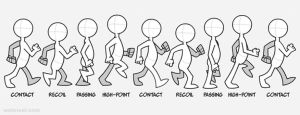Entrance Announcement
MICTE 2080
2080 Magh 07
User:Subekshya Poudel/Teaching Lesson Plan 28: Difference between revisions
(Created page with "<div style="column-count: 2; column-gap: 20px;"> '''Subject :''' Computer Graphics '''Period:''' Fourth '''Topic:''' Computer simulation, animation and virtual reality '''Teaching Item:''' Introduction to computer animation '''Level:''' Bachelor 6<sup>th</sup> sem '''Unit:''' Six '''Time:''' 50 min '''No. of Students:''' <br> </div> == Specific Objective == At the end of this lesson students will be able to: * define computer an...") |
|||
| (5 intermediate revisions by the same user not shown) | |||
| Line 15: | Line 15: | ||
'''No. of Students:''' | '''No. of Students:''' | ||
<br> | 21<br> | ||
</div> | </div> | ||
== Specific Objective == | == Specific Objective == | ||
| Line 27: | Line 27: | ||
* Laptop | * Laptop | ||
* Presentation slide | * [https://docs.google.com/presentation/d/1WHvJBDXVvXJuUK-sRcKdTj50hDNvriuz/edit?usp=drive_web&ouid=106229329120852626788&rtpof=true Presentation slide] | ||
* Projector | * Projector | ||
* Whiteboard and marker | * Whiteboard and marker | ||
== Teaching Learning Activities == | == Teaching Learning Activities == | ||
[[File:Moving object.jpg|thumb]] | |||
1. I will begin the class by | 1. I will begin the class by asking what came in their mind when they heard word animation.<br> | ||
2. Then | 2. Students will answer cartoons, video games,etc.<br> | ||
3. Then begin the topic animation is the act of making something alive with a technique of creating moving images or visual effects through computer technology.<br> | |||
4. Present the image of walking cycle animation and other animated images.<br> | |||
5. Discuss the key components that create smooth and realistic motion:Contact, Recoil, Passing and High-point with example <br> | |||
6. Describe different types of animation:Traditional animation, 2D animation, 3D animation, Stop-motion animation, Claymation, Motion graphics and Cut-out animation.<br> | |||
7. Ask students what are the application area of computer animation they know.<br> | |||
8. Discuss the application area and how animation are useful in those areas.<br> | |||
9. Describe the function/techniques of computer animation.<br> | |||
10. Show the example of morphing and tweening.<br> | |||
11. Discuss which algorithm are use for morphing and tweening.<br> | |||
12. Ask students if there is any confusion on today's topic and provide guidance and assistance if needed. | |||
== Assessment == | == Assessment == | ||
1. Explain | 1. Explain computer animation with its applications. | ||
2. | 2. Describe the techniques used in computer animation. | ||
Latest revision as of 08:44, 15 May 2024
Subject : Computer Graphics
Period: Fourth
Topic: Computer simulation, animation and virtual reality
Teaching Item: Introduction to computer animation
Level: Bachelor 6th sem
Unit: Six
Time: 50 min
No. of Students:
21
Specific Objective
At the end of this lesson students will be able to:
- define computer animation with is type
- describe the application of computer animation
- understand the concept of function of computer animation
Teaching Materials
- Laptop
- Presentation slide
- Projector
- Whiteboard and marker
Teaching Learning Activities

1. I will begin the class by asking what came in their mind when they heard word animation.
2. Students will answer cartoons, video games,etc.
3. Then begin the topic animation is the act of making something alive with a technique of creating moving images or visual effects through computer technology.
4. Present the image of walking cycle animation and other animated images.
5. Discuss the key components that create smooth and realistic motion:Contact, Recoil, Passing and High-point with example
6. Describe different types of animation:Traditional animation, 2D animation, 3D animation, Stop-motion animation, Claymation, Motion graphics and Cut-out animation.
7. Ask students what are the application area of computer animation they know.
8. Discuss the application area and how animation are useful in those areas.
9. Describe the function/techniques of computer animation.
10. Show the example of morphing and tweening.
11. Discuss which algorithm are use for morphing and tweening.
12. Ask students if there is any confusion on today's topic and provide guidance and assistance if needed.
Assessment
1. Explain computer animation with its applications.
2. Describe the techniques used in computer animation.